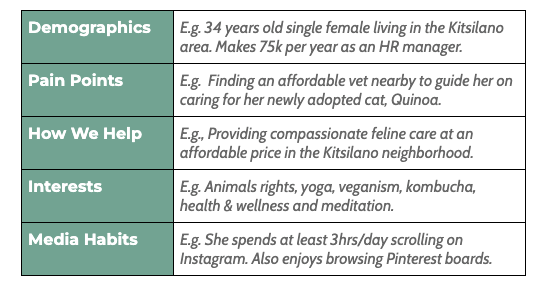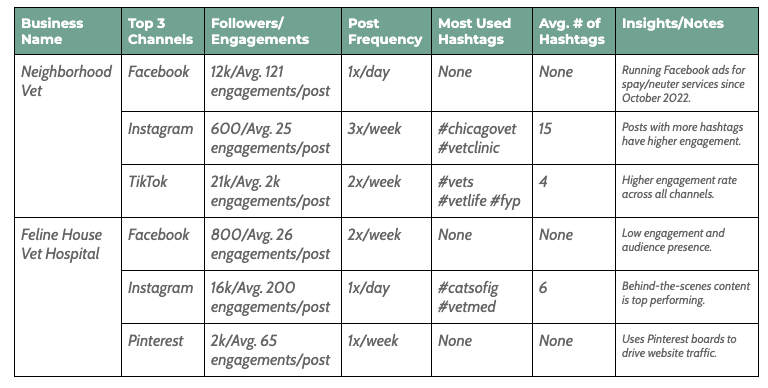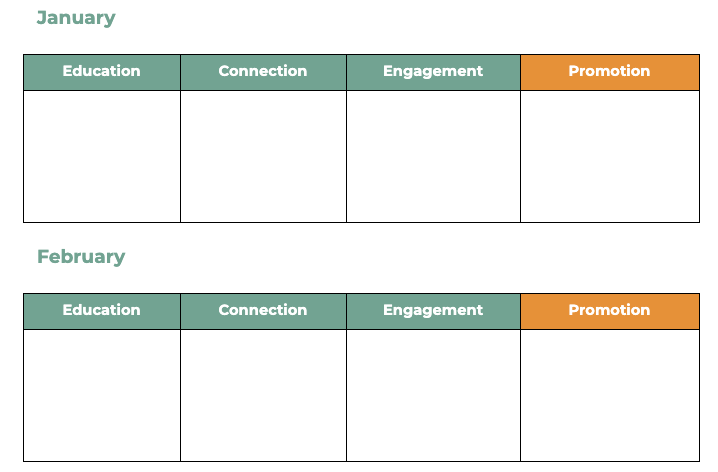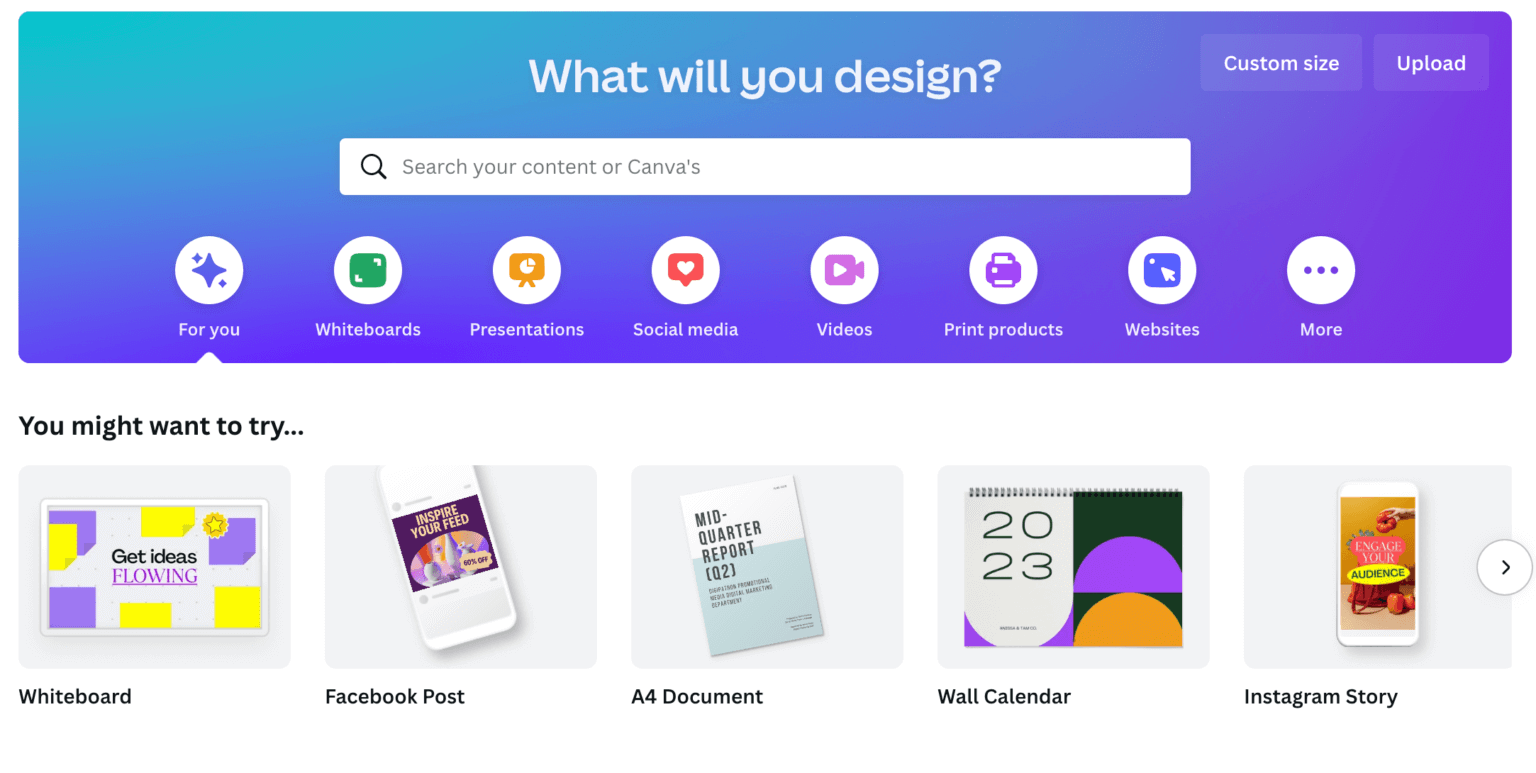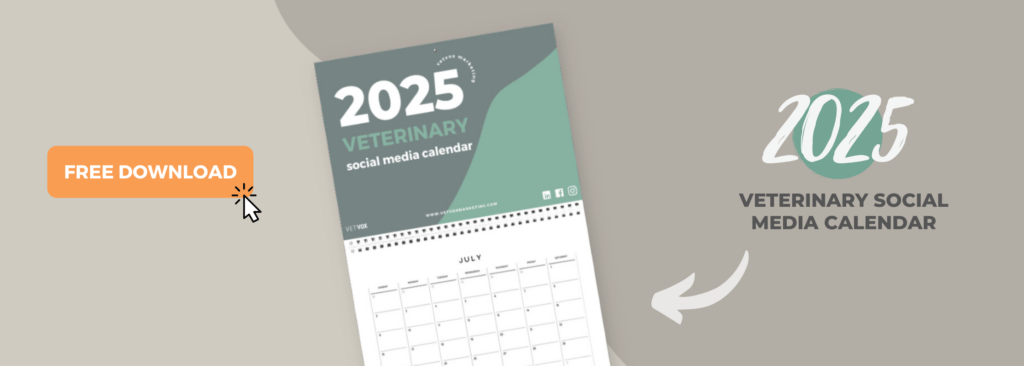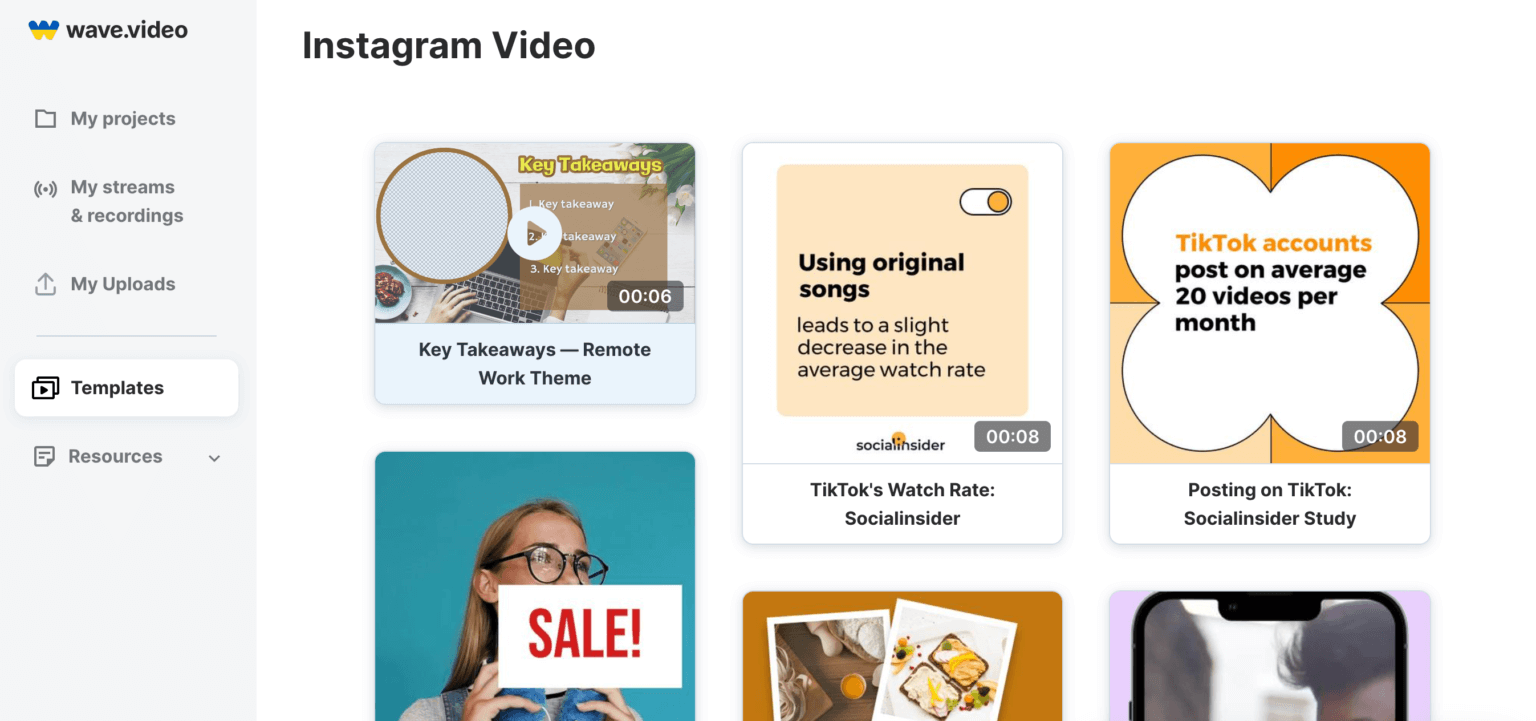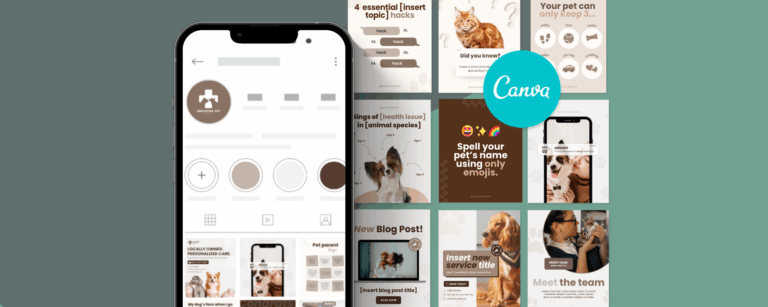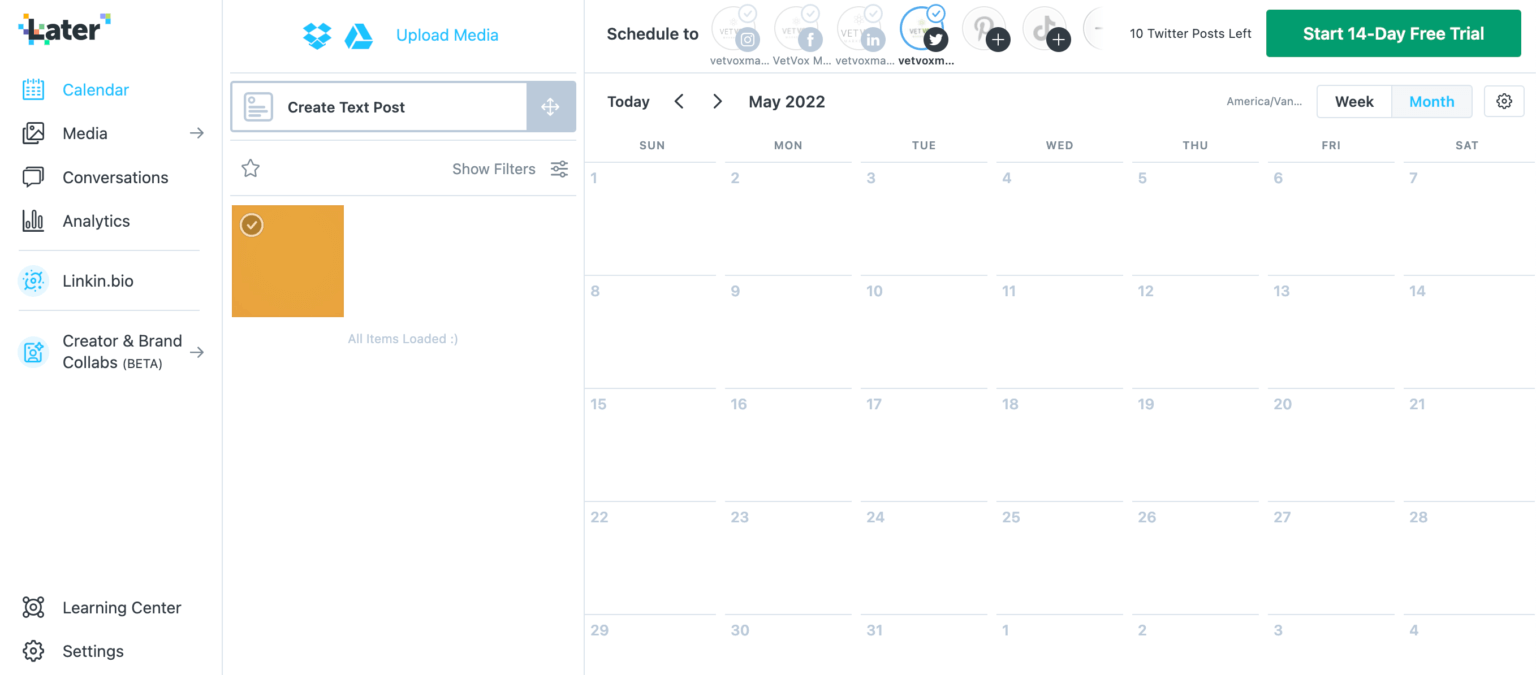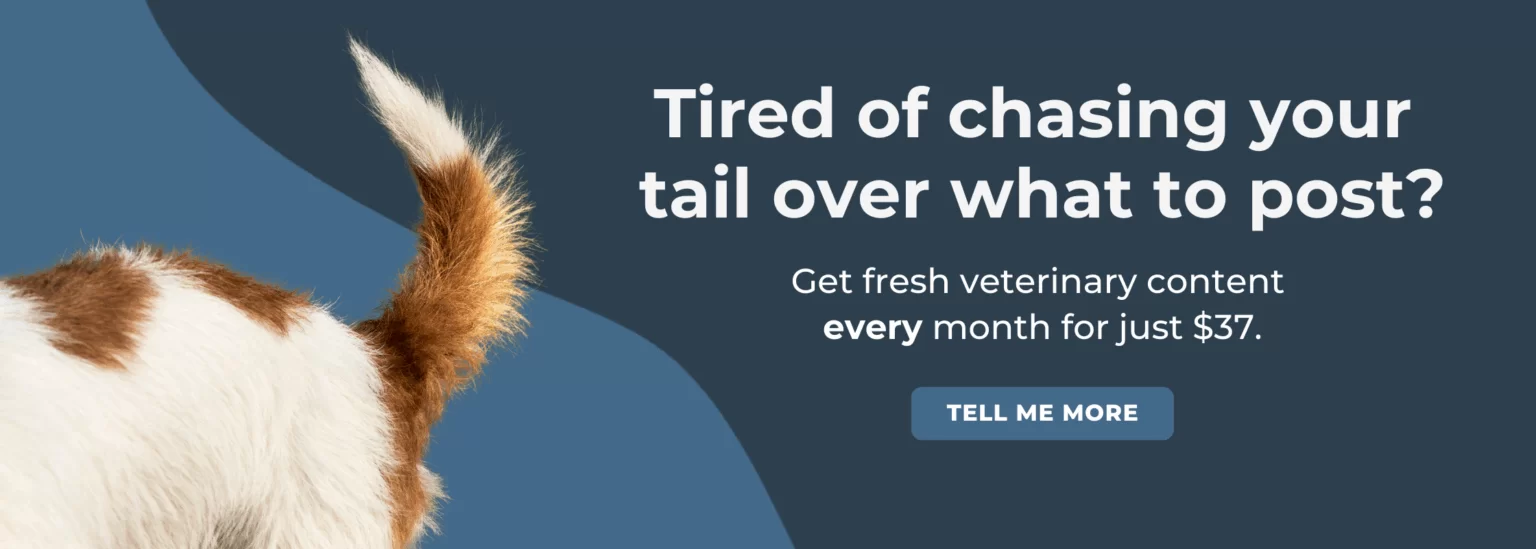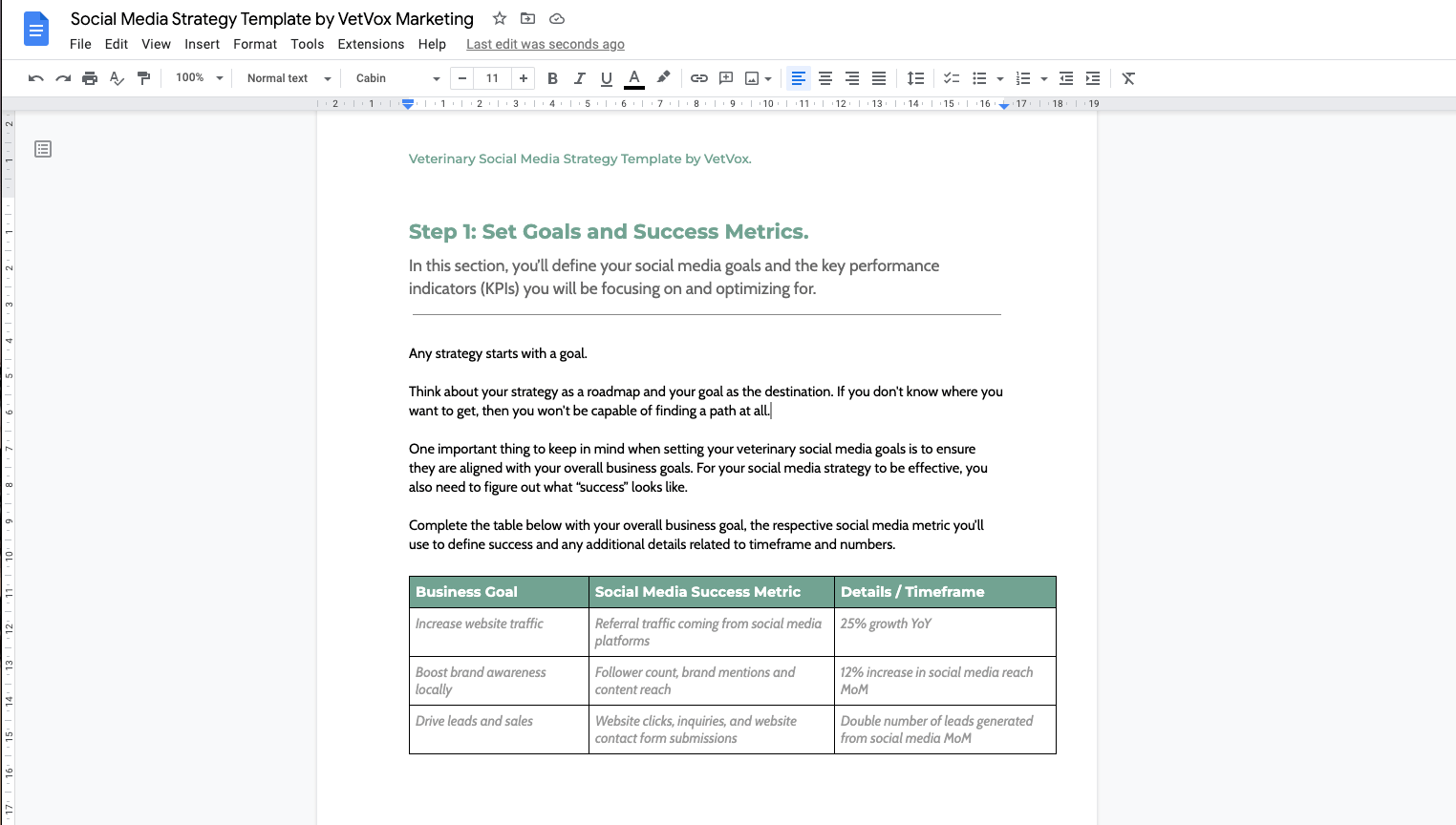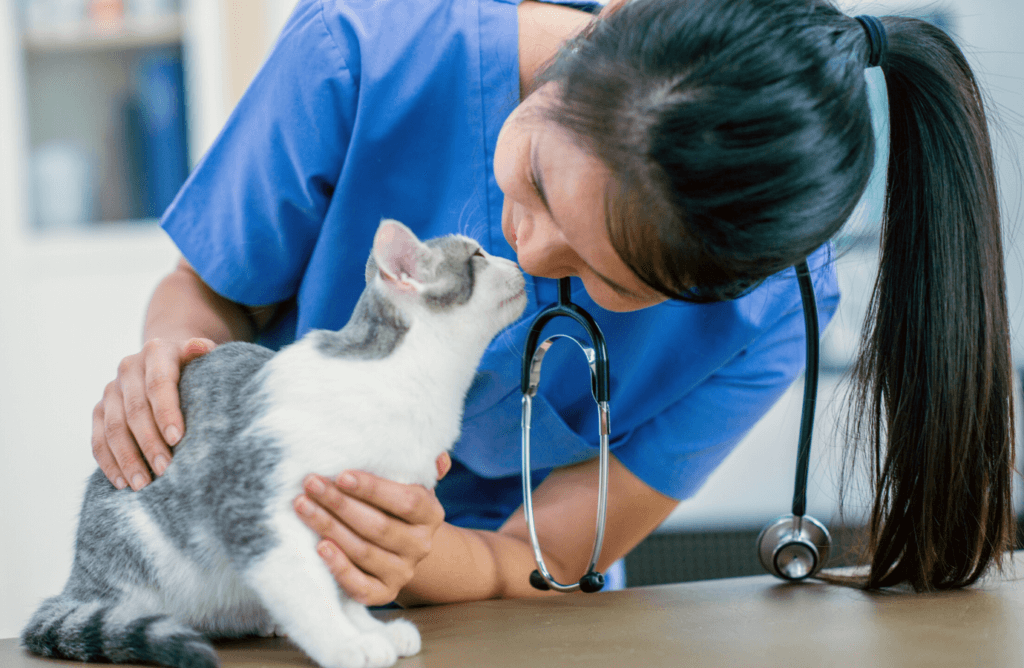
Veterinary Social Media: The Ultimate Guide For 2025
Welcome to the most complete guide to veterinary social media you will find on the Internet!
In this in-depth guide, you’ll discover:
- How to develop a solid veterinary social media strategy for your brand.
- A framework for creating engaging veterinary social media posts consistently.
- How to use social channels strategically to drive your veterinary business goals.
- Essential veterinary social media resources you need to get the work done hassle-free.
- And lots more!
So if you’re ready to go “all in” with veterinarian social media marketing, keep reading!
Chapters

CHAPTER 1
Veterinary Social Media Essentials
In this chapter, you’ll get a handle on the fundamentals of social media for veterinarians.
Whether you’re just getting started or already have some experience with veterinary social media marketing, it’s always good to “go back to the basics”.
In the later chapters, we’ll cover more advanced aspects, but for now, let’s dive into the essentials by answering three common questions veterinary professionals have:
What's Veterinary Social Media?
Veterinary social media marketing is simply the strategic use of social networks by veterinary professionals with the goal of educating, communicating and connecting with current and potential clients.
Just like any other veterinary marketing tactic, social media marketing is results-driven and should always be aligned with your clinic’s overall business goals – whether that’s increase brand awareness, drive compliance or leverage lead generation.
Why Social Media Matters for Veterinarians?
Here are a few quick stats about pet owners’ online behaviour that I bet you didn’t know:
- Pet owners spend 178% more time on social media than other users.
- 79% of pet owners with Internet access are on Facebook.
- 65% of pet owners post about their animals on social media at least twice a week.
What does that mean for you?
Social media is a virtual gold mine for veterinarians! Your current and potential clients are spending hours on these channels every day, and you need to meet them where they are.
But wait — there’s more.
Besides helping you connect with local pet owners, social media is a powerful tool that allows you to reach a wide range of business goals. For example:
- Leverage client compliance, loyalty and customer life-time value (CLV).
- Acquire new clients and drive revenue.
- Build trust with current and potential clients.
- Protect your brand’s reputation.
- Leverage brand awareness for your clinic locally.
- Differentiate your brand and build a competitive advantage.
What Are the Best Veterinarian Social Media Channels in 2025?
Selecting the right social platforms is an essential first step when developing a strategic veterinary social media plan (more on this later).
For now, I want to present you with all the possibilities.
The chart below, created by Shopify, shows the latest user-base numbers for some of the most popular social networks last year.
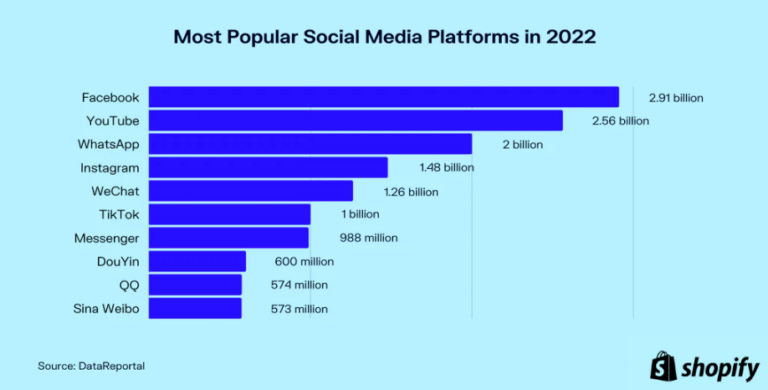
Ok, I know what you’re thinking: “I should have a presence on the top channels, right?”
Wrong.
The channels with a higher number of active users are not necessarily the best channels for veterinary professionals.
To effectively select the social networks to invest your time and resources in, you should take two main things into consideration:
- Your audience: The number #1 criterion for selecting a channel is your target audience. Be where your current and ideal clients are.
- Your available resources: If you have only a part-time employee taking care of social, then focus on mastering 1 channel. If a full-time team member is dedicated to it, then you can broaden your presence to 3 channels.
Numbers aside, here’s a brief overview of the channels we consider the most relevant for veterinary social media brands in 2025:
- Facebook: This platform has amazing tools for educating clients and building community (e.g., groups and live streams). Consider creating veterinary Facebook posts if your primary audience is 30+.
- Instagram: A very visual social media channel. Great for telling stories, connecting with clients, and humanizing your brand. Prioritize veterinary Instagram posts if your clientele is mostly under 40.
- Twitter/X: Focused on real-time conversations, breaking news, trending topics, and bite-sized content. Consider being on Twitter if your audience skews toward the demographic of males between 30-60.
- TikTok: This one is all about fun! For your content to thrive on TikTok, it should be interesting, catchy, and entertaining. Creating short videos on this platform can help you reach a wide audience of young customers in your area. Prioritize TikTok if your target audience is under the age of 35.
CHAPTER 2
Veterinary Social Media Strategy
Now that you have a basic understanding of the “what”, “why” and “where” of social media for veterinarians, it’s time to dive into the “how”.
In this chapter, you’ll learn a practical 5-step framework that will guide you through creating a sound veterinary social media strategy for your practice.
These five steps below are the groundwork that has to be done before you start creating content. Going through these initial steps will make a huge difference in the effectiveness of your veterinarian social media efforts in the long run.
Let’s get started!
Step 1: Set Goals & Success Metrics
Any strategy starts with a goal.
Think about your strategy as a roadmap and your goal as the destination. If you don’t know where you want to get, then you won’t be capable of finding a path at all.
One important thing to keep in mind when setting your veterinary social media goals is to ensure they are aligned with your overall business goals.
In other words, your social media goals should reflect your bigger company targets. For example:
- If your business goal is to generate brand awareness; your social media goal could be to grow your audience and content reach.
- If your business goal is to boost dentistry appointments on a specific month; your social media goal could be to generate leads for that specific service or engagement rate on dentistry-related posts.
- If your business goal is to leverage customer loyalty; your social media goal could be to create an engaged community of loyal followers or drive customer reviews.
- If your social media goal is awareness; a key metric to monitor is reach and follower growth rate.
- If your social media goal is to build a community online; key metrics include engagement rate and brand mentions.
- If your social media goal is to drive sales for dentistry appointments; a key metric to monitor is the number of new dentistry leads that are coming from these channels.
This is a simple and visual way to showcase to members from all levels of your team the role of your veterinary social media efforts from a broader business perspective.
Having your whole team understand that your social content is strategic and goal-oriented will help with buy-in and support from the get-go!
Step 2: Get To Know Your Audience
Even the most well-crafted marketing strategy will fail if is targeting the wrong audience.
Your clients should be at the core of your veterinary social media marketing strategy, and taking some initial time to study them will pay off in the long run.
If you’ve been in business for some time you probably already have an idea of who your average client is. But that’s not enough here.
I want you to dig deeper, do some research and document your findings. The goal is to create a simple customer profile that will guide all your social media decisions.
So, where to start?
First, take a look at the data you already have. Here are a few places you can look for client insights:
- Your own database: Analyze all the customer information you might have internally. It could come from previous marketing activities such as email campaigns, sales data, or your own customer relationship management (CRM) software.
- Social media analytics: Every social platform will give you some degree of audience analytics. Take advantage of this data to understand your followers’ demographic (e.g., location, age, gender, etc) and behavioural features (e.g., the types of content that resonate with them, when they are most active online, etc).
- Website analytics: If you have Google Analytics installed on your website, you’ll be able to analyze visitor data related to demographics, location, language, and even interests/affinity categories.
Finally, after learning as much as possible about your customers, add these insights to your client profile table inside your veterinary social media strategy template. This profile should clarify four main features of your target client:
- Demographics: Job title? Age and gender? Average income? Location? Marital status?
- Pain points: What are their challenges? How do we help?
- Interests: What are their common interests? Do they have any hobbies?
- Media consumption: Where do they usually hang out online? When do they look for the type of content you can provide? What type of content do they prefer to consume?
And that’s it!
With your newly created customer profile, now it’s time to explore another important member of your marketing ecosystem: your competitors.
Step 3: Study Your Competitors
Your primary local competitors are targeting the same market as you. Why not learn from them?
Start by conducting a social media analysis of your competition and aim to answer these questions:
- How often and to what channels are they posting?
- What type of content performs well? What type of content doesn’t perform so well?
- How many followers do they have? What’s their average follower growth rate?
- What’s their posts’ average engagement rate?
- What hashtags are they using (if any)? How many?
- What are their strengths and weaknesses and how do they compare to your own strengths and weaknesses?
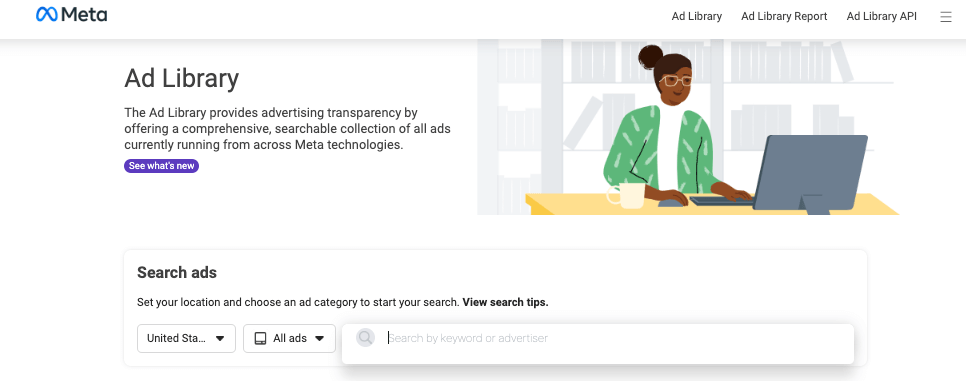
Facebook Ads Library is a great resource that lets you “spy” on your competitors’ Facebook and Instagram ads. Type in the name of your competitor’s Facebook page and, if they’re running Facebook or Instagram ads, you will see them all!
Analyze the type of ad creative they use, their call-to-actions, and for how long their ads have been running (this might indicate the profitability of a campaign).
To finish off your competitive research, use the template sheet below to organize your analysis and document insights.
Step 4: Define Your Tactics
Now that you have a good understanding of your goals & success metrics, audience and competitors, it’s time to get to the nitty-gritty of the strategy: the tactical plan.
It’s time to use all the intel you’ve gathered in the previous steps to determine the most specific details of your strategy. At this point, you’ll make the following decisions:
- Channels: Select the networks that better align with your goals, audience, resources and competitive landscape. What channels are you going to prioritize? Which networks are you going to strategically ignore for now?
- Content types: Determine your original vs. curated content ratio and media type. Are you going to share a mix of carousels, short videos and photos? Are you creating a Facebook group or scheduling regular lives? Get specific!
- Ads: Do you have a budget to boost your posts? Are you going to run any Facebook Ads campaigns?
- Optimal posting times: Based on competitive research and the data you currently have from your social analytics, what are the most effective times to post? What days of the week drive the most engagement?
Step 5: Determine Your Content Pillars
Content pillars are the main editorial topics you’ll cover on your social channels. Having this set will facilitate your content creation, especially when you’re out of ideas.
I recommend that veterinary brands focus on 4 general content pillars to guide their veterinary social media posts.
3 of them are value-based pillars:
- Education: Posts that build trust and credibility by sharing pet care advice and demonstrating your expertise.
- Connection: Content that helps you connect with your audience by telling stories and showing the people behind your brand.
- Engagement: Think fun! This type of content will help you nurture relationships with your followers by entertaining and engaging them in a very light-hearted way.
- Promotion: Action-oriented posts that get people to your practice by highlighting your offerings and your unique selling proposition.
One important rule of thumb to keep in mind is that your content mix should have a balance between promotion and value. You want to have 80% of your monthly veterinary social media calendar be value-based posts. The other 20% should be promotion-based posts.
Why?
This content mix will ensure you’re not sharing too much promotional material (which will cause you to lose followers) or completely forgetting about your conversion campaigns (which will generate $0 social ROI).
Your content mix should look something like this:
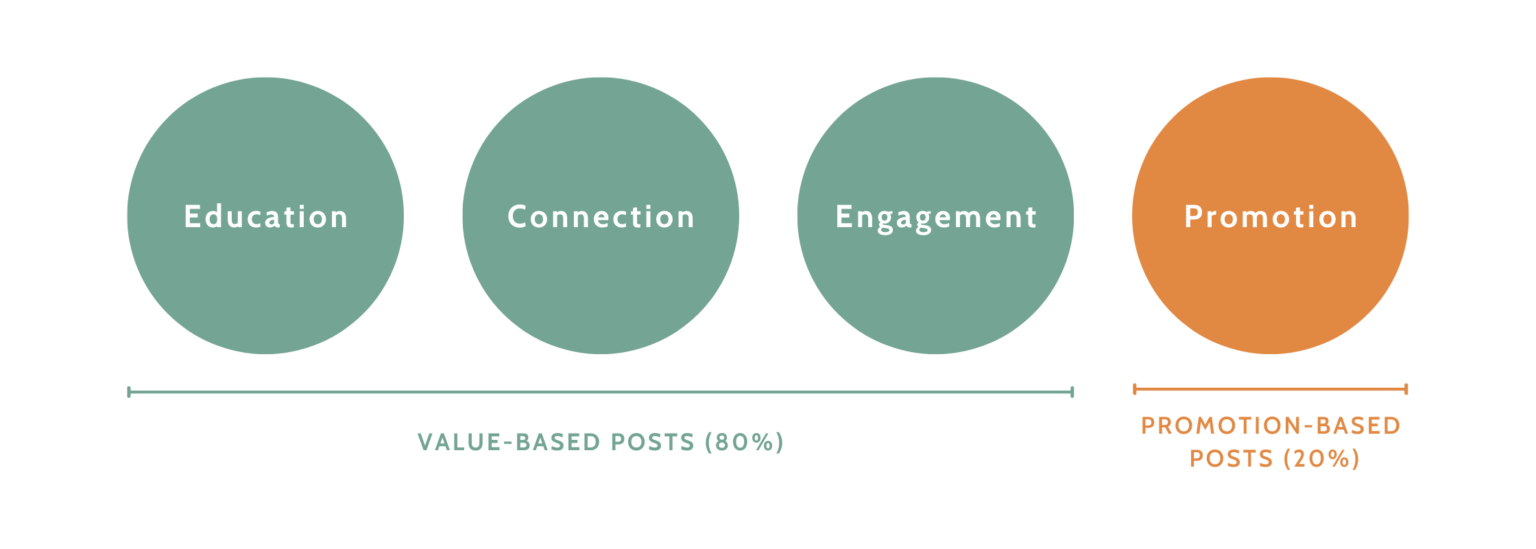
With these concepts of content pillars in mind, start brainstorming veterinary social media post ideas that are aligned with each pillar. Use our FREE Veterinary Social Media Strategy Template to list all your ideas month after month.
And that’s a wrap for chapter 2, you did it!
Now that you’ve made all the strategic decisions and have a good grasp of your content plan, it’s time to dig a little deeper into content creation.
In the next chapter, I’ll walk you through a content creation framework that will help you save time and say consistent with your posts creation.

CHAPTER 3
A Framework For Creating Veterinary Social Media Posts
In this chapter, we’ll dive into the actionable steps of creating veterinary social media content.
The goal of this framework is to standardize the content creation processes and help you craft posts more consistently and strategically.
The framework has 4 simple steps. These 4 steps are what separates you from the consistent, strategic content you’ve always dreamed of.
Let’s dive right into it!
Step 1: Define Monthly Themes
The first step is to determine your monthly campaigns or themes. I recommend doing this once per year. It will save you so much time!
Having monthly themes is not mandatory, and it will depend on your clinic’s needs.
But…
Setting these themes early on will facilitate content ideation and ensure you are posting strategically.
If you need guidance on choosing monthly themes for your clinic, check out our FREE Veterinary Social Media Calendar. It includes a 12-month plan of content themes and all social media dates, monthly and weekly observances that are relevant to veterinary professionals.
Even though this resource gives you recommendations for themes based on national and international veterinary-related dates, you should prioritize what makes the most sense for your clinic as a business.
If on a specific month you’re looking for more dental appointments, build a campaign around the dental health theme – even if the calendar says it’s spay/neuter month.
Step 2: Find Veterinary Social Media Posts Ideas
If you have done your homework, you should already know your competitors’ best-performing posts and, if you’ve been on social media for some time, you already know what works best for your clinic as well.
Besides learning from your data and the competition, there are a few places you can look to find veterinary social media posts and ideas.
Here’s a list you will want to save for later:
Free Veterinary Social Media Calendar:
Never miss a social media moment with our Veterinary Social Media Calendar 2025. This resource will give you tons of post ideas and includes all important holidays and dates (U.S. and Canada). Click here to grab your copy!
Clients Research:
Your customers should be your primary source of content ideas. Get ideas from their most frequently asked questions, messages, and comments on social media.
Hashtag Research:
Online Forums and Groups:
Another way to brainstorm general pet health-related ideas is by searching online forums and Facebook groups. Search for a topic you’re interested in, and you’ll get a list of questions people are asking. See the example below where I typed “pet dental health” on Quora.
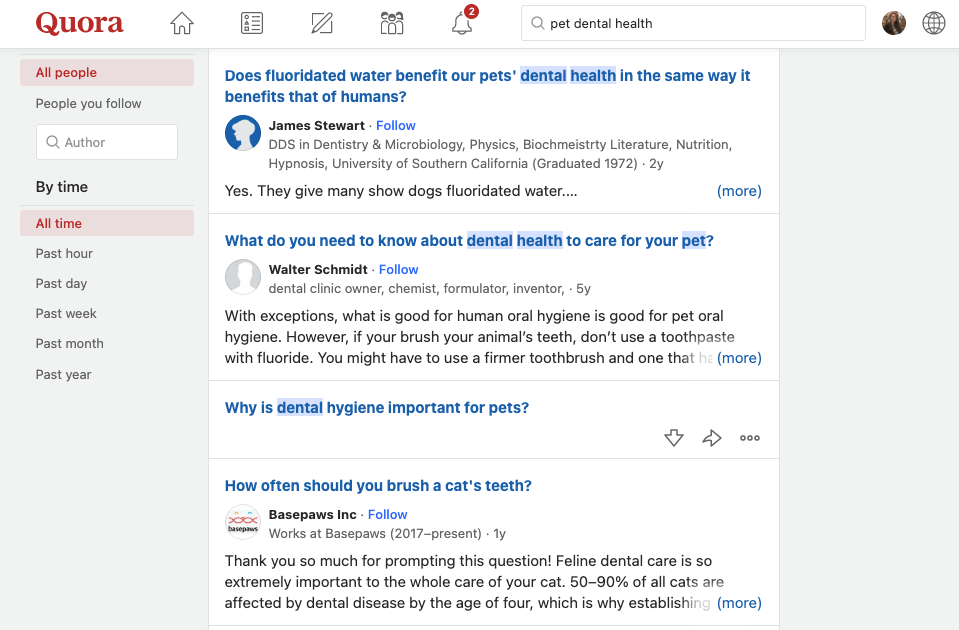
Veterinary Instagram Post Ideas:
Check out our blog with 20 Veterinary Instagram Posts To Boost Your Engagement.
Veterinary Facebook Post Ideas:
Check out our blog with Quick Veterinary Facebook Post Ideas For Busy Clinics.
Content Curation:
You can also share content from other trusted resources if you believe they will be interesting to your audience. PetMD is a great resource for reliable, veterinary-curated content.
120+ Veterinary Post Ideas Blog:
We put together a blog article with a whole YEAR of veterinary social media posts to help you save time when creating content. Check it out here!
User-generated Content (UGC):
If your clinic has been on social media for some time, your customers are probably mentioning your brand in their posts – that’s called user-generated content (UGC). How to find UGC? Search for your branded hashtags, tagged content, or posts that use your clinic’s location.
The key to successful veterinary social media content is to use different approaches to convey the same message. Educate followers with an infographic, tell stories with a behind-the-scenes photo, entertain with a meme, or inspire with an engaging quote.
Step 3: Plan Your Content Calendar
Now that you’ve brainstormed tons of post ideas, is time to place them into a veterinary social media content calendar!
When planning your posts, keep in mind your content pillars, content types and post frequency determined in your strategy (chapter 2). You should spread out your pillars throughout the month.
During this step, you will also determine the channels each piece of content will go out to and what formats will be used.
Remember: To keep your audience engaged, diversify your content formats! Don’t post cute pet photos all time (even though they’re awesome!) or only educational infographics.
Avoid sharing posts in the same format back to back. If you share a quote today, post a photo or a video next instead of another text-based graphic.
Step 4: Batch-Create Your Posts
Roll up your sleeves, it’s time to bring your ideas to life!
This is probably the most time-consuming step but also the one you will have the most fun! We suggest you allocate a few hours per month to:
- Write your posts’ copy
- Design graphics
- Curate content you might already have
- Schedule the posts
We highly recommend Canva for creating your own social media templates for graphics such as special hours, promotions, company announcements, infographics, quotes, etc.
You can also check out our Shop to get done-for-you veterinary social media Canva templates that will save hours of your precious time when creating content!

CHAPTER 4
Social media for veterinary professionals can be very time-consuming. Luckily, there are many veterinary social media resources out there to help you get the job done efficiently!
Here are some of the most valuable resources to help you execute what you learned in this guide effortlessly.
Great for: Designing professional social media graphics.
Price: Free version available. Paid plans starting at $12.95/month.
Description: Canva is your design best friend! With its simple and intuitive user experience, Canva gives you all the tools you need to bring your graphic ideas to life. Even on the free plan, you will have access to tons of templates and graphic assets.
Great for: Coming up with post ideas and planning monthly themes.
Price: 100% Free!
Description: This calendar includes all veterinary dates and relevant observances to help you plan out your posts month after month. Click here to grab your free copy of the calendar today and never miss a social media moment!
Great for: Creating high-quality social media videos easily.
Price: Free version available. Paid plans starting at $16/month.
Description: Wave.video is one of the most popular social media video editors. With a drag-and-drop interface, this tool allows you to create eye-pleasing and engaging video content in a matter of a few clicks! Browse a library of 1000+ free video templates that can be easily customized to your brand.
Great for: Easily creating branded social media graphics that will stop the scroll and drive engagement.
Price: $67 (one-time purchase).
Description: Create a whole YEAR of weekly engaging veterinary social media quotes in minutes! These templates can be easily edited with a free Canva account so you can customize them to your brand and use over and over again.
Great for: Managing and scheduling social media content.
Price: Free.
Description: Meta Creator Studio is Facebook’s native content management tool. If you’re looking for a free platform to schedule your veterinary Facebook posts and veterinary Instagram posts, this is your best bet! Facebook Creator Studio lets you not only schedule posts to both Facebook and Instagram but also gives you access to social analytics and allows you to manage your social media conversations all in one place.
Great for: Planning and scheduling social media content.
Price: Free version available. Paid plans starting at $18/month.
Description: Later is a paid option for social media content management. It’s an intuitive and visual platform that helps you plan, schedule and analyze the performance of your posts. My favourite thing about Later is that it allows you to preview your Instagram feed as you schedule your content. This way, you can plan out your posts’ visuals ensuring they create an on-brand feed aesthetic.
Great for: Veterinary teams seeking to streamline their social media efforts and focus more on patient care.
Price: Starting at $37/month.
Description: We offer comprehensive veterinary social media services designed specifically for small, independent practices. Our solutions include branded social media kits, done-for-you veterinary social media management, and a one-of-a-kind veterinary content subscription, Vet Marketing Hub™.
Great for: Easily creating a professional veterinary Instagram “link in bio” page.
Price: Free version available. Paid plans starting at $4.99/month.
Description: Biolinky is a free tool that allows you to combine all your important links into one branded page for your Instagram “link in bio” field. It also has built-in analytics so you can try the performance of your content and make changes to optimize website traffic from social media.
Great for: Developing your unique veterinary social media marketing strategy.
Price: Free.
Description: This resource will guide veterinary professionals in creating a sound social media strategy. Download now to have access to all the sheets and templates used in Chapter 2 of this blog. Click below access the template now!
Conclusion
If you got this far into the article, congratulations! You took a huge first step into becoming a veterinary social media pro, and we’re so proud of you.
I hope you found this guide to veterinary social media marketing helpful and are encouraged to go ahead and execute it!
Veterinary social media marketing can be a complex topic. Our goal, as vets’ #1 marketing partner, is to simplify it.
If you have any questions or need personalized support to grow your veterinary social media presence, feel free to reach out!
And don’t forget to browse our full library of FREE veterinary social media resources and our shop for more.

